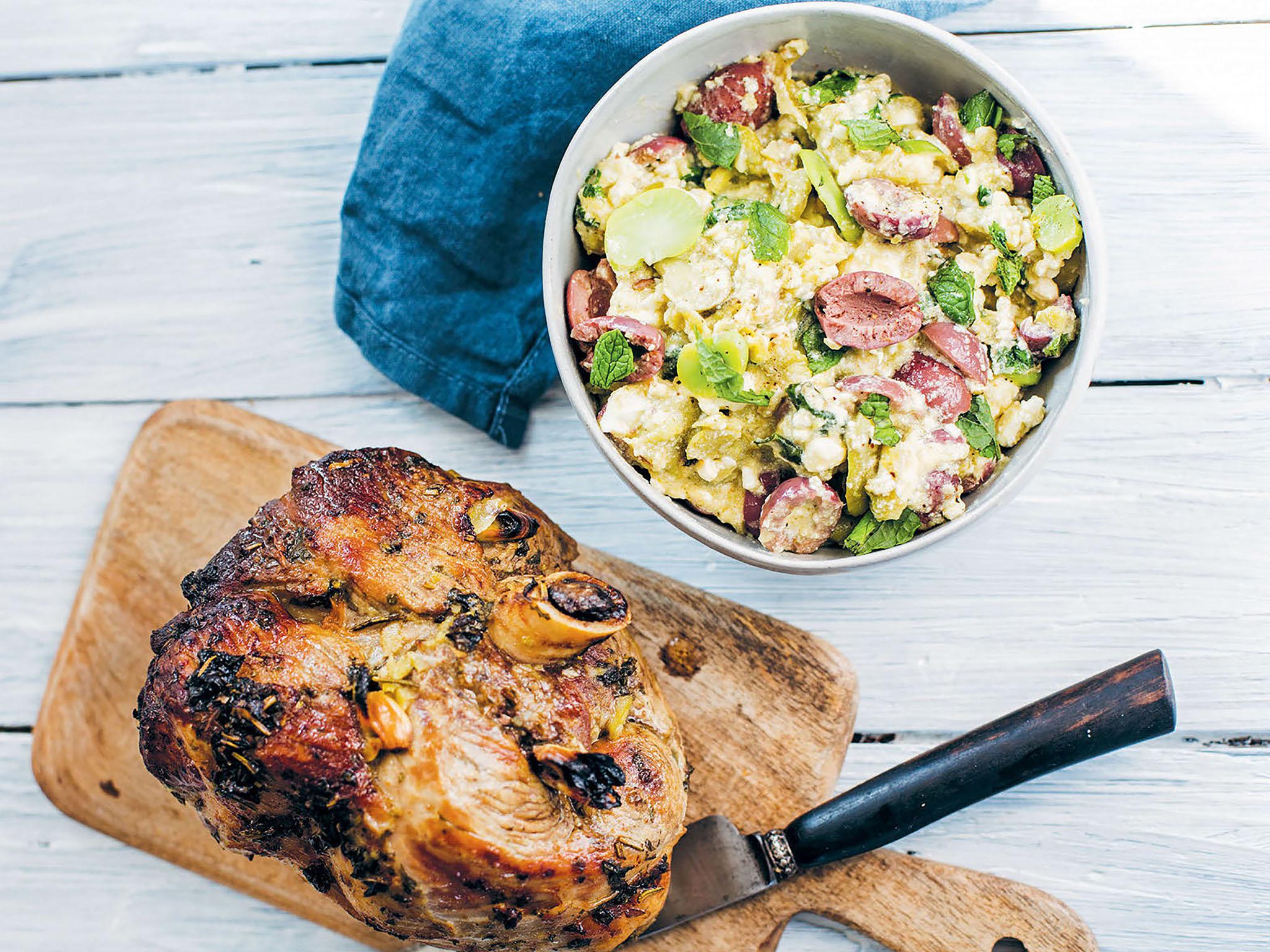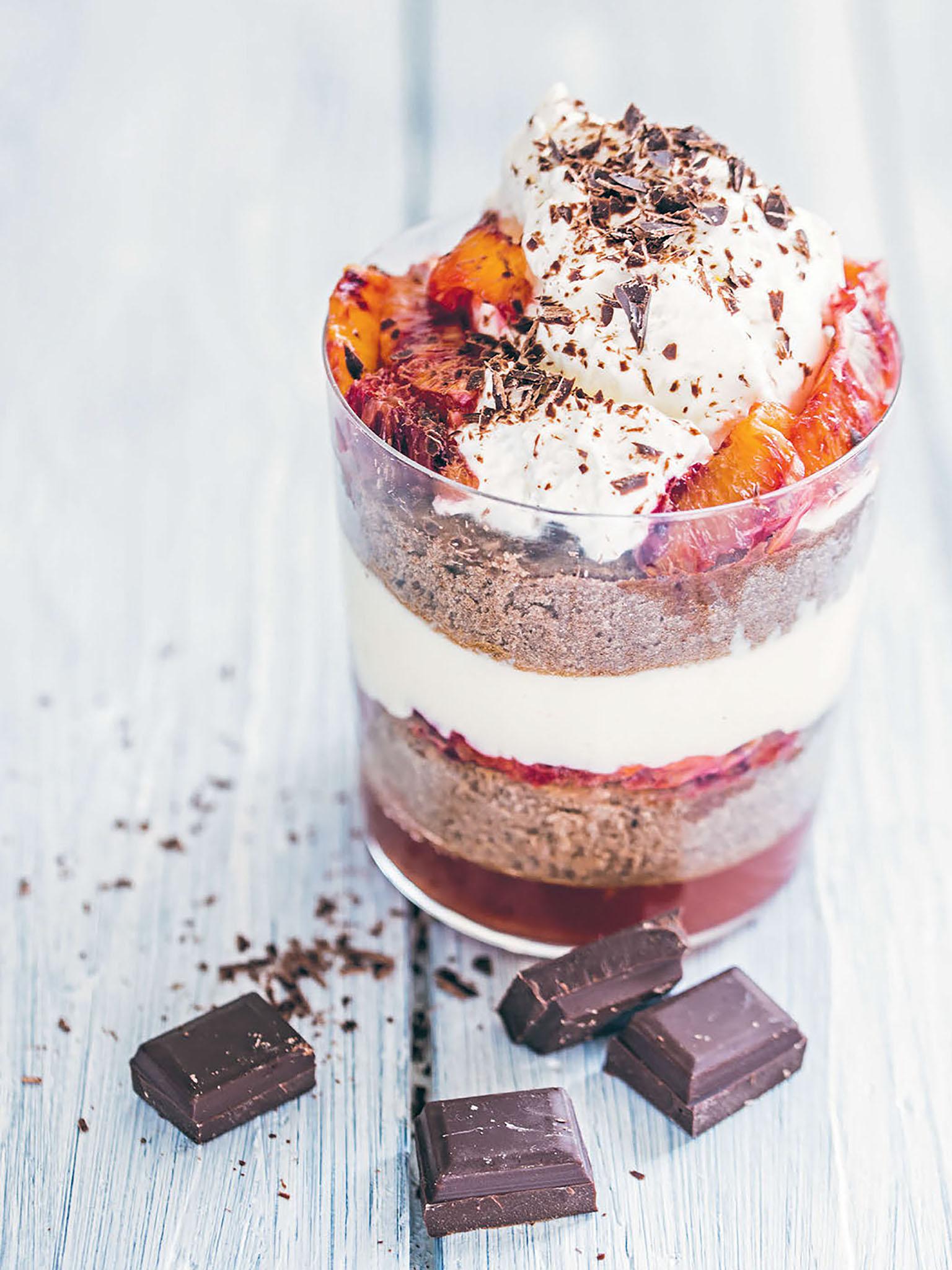Harvest cookbook recipes: Three ways to make the most of spring produce
Spring is just around the corner so make the most of the fresh new produce with food blogger Emile Guelpa's recipes for lamb, salads and blood orange dessert

Your support helps us to tell the story
From reproductive rights to climate change to Big Tech, The Independent is on the ground when the story is developing. Whether it's investigating the financials of Elon Musk's pro-Trump PAC or producing our latest documentary, 'The A Word', which shines a light on the American women fighting for reproductive rights, we know how important it is to parse out the facts from the messaging.
At such a critical moment in US history, we need reporters on the ground. Your donation allows us to keep sending journalists to speak to both sides of the story.
The Independent is trusted by Americans across the entire political spectrum. And unlike many other quality news outlets, we choose not to lock Americans out of our reporting and analysis with paywalls. We believe quality journalism should be available to everyone, paid for by those who can afford it.
Your support makes all the difference.It's official – spring is on its way (even if it doesn’t feel like it). Which means fresh new seasonal produce on the shelves. Food blogger Emile Guelpa’s new book Harvest makes the most of these warmer months’ ingredients, such as lamb, broad beans and blood oranges. Here are three recipes to enjoy the season with.
Moroccan broad bean salad with yoghurt and crispy breadcrumbs
This is a simple dish, but one that requires quality ingredients. All the stages can be prepared in advance and then assembled just before serving. Make sure you serve the broad beans and breadcrumbs either slightly warm or at room temperature.
Serves 4
2 teaspoons cumin seeds
1 teaspoon coriander seeds
250g sourdough bread, crusts removed
oil for cooking
1kg broad beans
1 lemon
250g plain yoghurt
2 teaspoons tahini
2 tablespoons chopped coriander leaves or mint, or both
salt and freshly ground black pepper
1 red onion, finely sliced
3 tablespoons extra-virgin olive oil
2 tablespoons shredded mint
Place a small frying pan over a medium heat and toast the cumin seeds until golden brown and fragrant. Remove and set aside to cool. Repeat with the coriander seeds. Once cool, grind them roughly using a mortar and pestle. Set aside.
Roughly chop the sourdough bread into breadcrumbs. Heat a large heavy-based frying pan over medium-high heat. Add a generous splash of oil to the breadcrumbs and cook for 4-5 minutes, stirring often, until the breadcrumbs are golden and crunchy. When just about cooked, sprinkle the ground spices over the top and toss well to coat.
Remove the broad beans from their pods and bring a large saucepan of water to the boil. Cook the beans for 1 minute, then drain and refresh under cold water. Remove the pale green skins by creating a slit in them and pushing the beans through it. Discard the skins. Put the bright green inner beans in a bowl.
In a separate bowl, finely grate the zest of the lemon and combine with the yoghurt, tahini, coriander and/or mint. Season well with salt and freshly ground black pepper and set aside. Juice the lemon and add to the broad beans, along with the red onion, olive oil and mint. Leave at room temperature. To serve, divide the yoghurt mixture among four bowls, top with the broad beans and scatter with the crispy breadcrumbs.

Herb-roasted leg of lamb with hot broad bean and feta dressing
Lamb, feta and herbs are a perfect combination. Try to cook the lamb so it’s still pink in the middle and allow to rest for a good 15 minutes before carving.
Serves 6
2 garlic cloves
2 tablespoons chopped oregano
2 tablespoons chopped rosemary
2 tablespoons chopped basil
zest of 2 lemons
125ml olive oil
salt and freshly ground black pepper
1.5kg lamb leg
1.5kg broad beans
80g pitted kalamata olives
1 handful of flat-leaf Italian parsley
1 small handful of mint, roughly torn
2 tablespoons lemon juice
1 teaspoon dijon mustard
3 tablesoons extra virgin olive oil
100g crumbled feta
Preheat the oven to 180°C (350°F). Grind the garlic using a mortar and pestle. Add the herbs and lemon zest and grind to a rough paste. Add the olive oil, season with salt and freshly ground black pepper and mix until combined.
Rub the paste all over the lamb. Place in a deep roasting tin and roast for 1-1½ hours. To check if the lamb is done, insert a small knife into the centre of the roast. Count to five. If the knife feels warm (tepid), the meat is rare. If it feels bearably hot, the meat is medium. You’re aiming for medium to medium-rare. If necessary, cook for a further 5 minutes and test again. Cover and rest for 20 minutes in a warm place before carving.
Meanwhile, remove the broad beans from their pods and bring a large saucepan of water to the boil. Cook the beans for 1 minute, then drain and refresh under cold water. Remove the pale green skins by creating a slit in the skin and pushing the beans through it. Discard the skins.
Toss the broad beans, olives, parsley and mint together in a bowl. In a separate bowl, whisk together the lemon juice, mustard and extra-virgin olive oil, and season with salt and freshly ground black pepper. Pour into a large frying pan over medium-low heat, add the feta and the broad bean mixture, and cook gently until just warmed through. Pour the lamb roasting-pan juices into the dressing and stir to combine. Remove from the heat.
To serve, carve the lamb and top with the hot broad bean and feta dressing.

Blood orange and dark chocolate trifle
While this requires a bit of effort to prepare and construct, it’s time well spent. The end result is a stunning combination of colours and flavours.
Serves 6
6-8 tablespoons Grand Marnier
4 blood oranges, cut into segments
300ml whipping cream
dark chocolate for serving
Blood orange jelly
3 x 5g gelatine leaves
250ml blood orange juice
115g caster sugar
Chocolate sponge
4 eggs
115g caster sugar
100g plain flour
1 tablespoon unsweetened cocoa powder
Custard
2 egg yolks
3 tablespoons caster sugar
1 tablespoon plain flour
500ml milk
1 teaspoon natural vanilla extract
2 tablespoons Grand Marnier
To make the jelly, soak the gelatine leaves in cold water for 5 minutes, or until softened. Remove from the water and squeeze gently to remove excess liquid before using. Put the juice, sugar and 325ml (11oz) water in a saucepan and bring to the boil. Remove from the heat. Add the gelatine leaves and stir until dissolved. Strain into a large glass bowl and refrigerate until set.
To make the sponge, preheat the oven to 180°C (350°F). Grease a 20 × 30cm (8 × 12in) baking tin and line the sides and base with baking paper. Beat the eggs and sugar together until very thick and light. Sift the flour and cocoa powder and carefully fold into the egg mixture, then spoon into the prepared tin. Cook for 15-20 minutes. Test the cake by pressing the centre lightly with your fingertips; it should feel firm and bounce back when pressed. When cooked, remove from the tin and allow to cool on a wire rack.
To make the custard, beat the egg yolks and sugar together until pale, then stir in the flour until smooth. Put the milk and vanilla in a saucepan and bring to the boil. Whisk the hot milk into the egg mixture, then pour into a clean saucepan. Cook the custard over a low heat and stir constantly as it comes to the boil and thickens. Remove from the heat and add the Grand Marnier. Set aside to cool.
To assemble the trifle, lay slices of the sponge over the top of the jelly and sprinkle the Grand Marnier over the top. Scatter the orange segments over the top of the sponge, reserving some for garnish. Spoon the custard over the sponge and fruit, and put in the refrigerator to set.
When ready to serve, whip the cream and layer on top of the trifle, garnishing with the reserved blood orange segments and a little grated chocolate.
Harvest by Emile Guelpa (Hardie Grant, £15) Photography © Emile Guelpa
Join our commenting forum
Join thought-provoking conversations, follow other Independent readers and see their replies
Comments